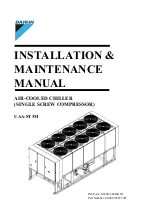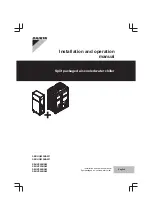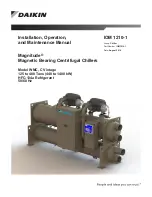
50
CTV-PRB004-EN
Electrical System—Ratings
Short-circuit current is often two orders of magnitude greater than normal operating current.
Unless a circuit breaker or fuse successfully interrupts the fault, this enormous amperage rapidly
heats components to very high temperatures that destroy insulation, melt metal, start fires … even
cause an explosion if arcing occurs or components disintegrate.The inherent likelihood of severe
equipment and property damage, as well as the risk of personal injury or death, underscores the
importance of sufficient electrical-distribution system protection.
Ampere-Interrupt Current (AIC)
Determined under standard conditions, the “interrupt rating” specifies the maximum amount of
current a protective device can cut off safely … i.e. without harm to personnel or resulting damage
to equipment, the premises or the device itself. For example, a circuit breaker that trips “safely”
successfully interrupts the fault, can be reset, and will function properly afterward.
A common misconception is, “An overcurrent protection device with a comparatively high-
interrupt rating limits current to other components.” Not so, not unless it is also a true current-
limiting device. Even though the device successfully breaks the circuit, all components in the circuit
will be exposed to the full magnitude of fault current (as well as the severe thermal and magnetic
stresses that accompany it) for the small amount time it takes the device to respond.
Short-Circuit Current Rating (SCCR)
Sometimes referred to as the short-circuit withstand rating (SCWR), the short-circuit current rating
(SCCR) is probably the most critical rating for short-circuit protection that the electrical engineer
must obtain from the starter supplier.The term “withstand” is no longer used by NEC and UL.The
entire assembled starter enclosure has an SCCR.
The short-circuit current rating is the maximum fault current that the starter withstood during
testing by Underwriters Laboratories, Inc. UL 508 defines the short-circuit test methods and
parameters for HVAC equipment, and therefore the SCCR is mainly a low-voltage issue. Essentially,
the test simulates an actual fault current in the starter enclosure, e.g. 50,000 amps. If the doors blow
open or if the starter emits debris, the enclosure fails the test. For those that pass, it is “acceptable,”
and even probable, that the internal components will be damaged beyond repair. Given the
destructiveness and expense of this test, it is not surprising that most manufacturers prefer not to
pursue higher-than-normal short-circuit current ratings for their equipment unless there is a
documented need.
Recall that when a fault occurs, all components in the circuit experience the brunt of the short circuit
until it is interrupted. Therefore, it is important to assure that all components “at risk” can
withstand a fault condition without causing personal injury or damaging the surroundings. The
National Electric Code (NEC) states this requirement in Section 110.10, “Circuit Impedance and
Other Characteristics”:
The overcurrent protective devices, the total impedance, the component short-circuit
[withstand] ratings, and other characteristics of the protected circuit shall be selected and
coordinated to permit the used circuit protective devices to clear a fault without extensive
damage to the circuit’s electrical components.This fault is assumed to be either between two
or more of the circuit conductors, or between any circuit conductor and the grounding
conductor or enclosing metal raceway. Listed products applied in accordance with their listing
shall be considered to meet the requirements of this section.
Commentary in the 1996 National Electrical Code™ Handbook further explains Section 110.10:
I
SC
=
1,500 kVA x 1000/k
480 V x 1.73 x 0.0575
I
SC
= 31,400 amps
CTV-PRB004.book Page 50 Sunday, December 18, 2011 6:39 PM
















































